Slide transcript#
I am working on finding ways to increase accessibility of the beamer slides provided. The following is an automatically generated transcript from the pdf of the slides but is still not perfect. I would be happy to hear feedback on how this transcript can be improved for additional usefulness.
Lecture 4 - Nerve, Cech, and Rips Complexes#
Section 2.2 Goals#
Goals for today:
Complexes from point clouds: Rips & complexes
Sparse Complexes: Alpha complex Recall: Geometric vs Abstract Simplicial Complex
Given a collection of points \(V \subseteq \mathbb{R}^N\)
For a subset of these \(\{a_0,\ldots,a_n\}\), a (geometric) \(n\)-simplex is the convex hull of the points.
A simplicial complex is a collection of geometric \(n\) simplices so that
Every face of a simplex is also in the complex.
The intersection of any two simplices is either empty or a face of both.
Given a finite set \(V\)
An abstract simplex is a subset of \(V\).
An abstract simplicial complex is a set \(K\) of finite subsets of some \(V\) such that if \(\sigma \in K\) and \(\tau \subseteq \sigma\), then \(\tau \in K\).
and Rips Complexes#
Point cloud#
A point cloud is a (finite) collection of points in a metric space \((M,d)\).
Ball#
What we want to study#
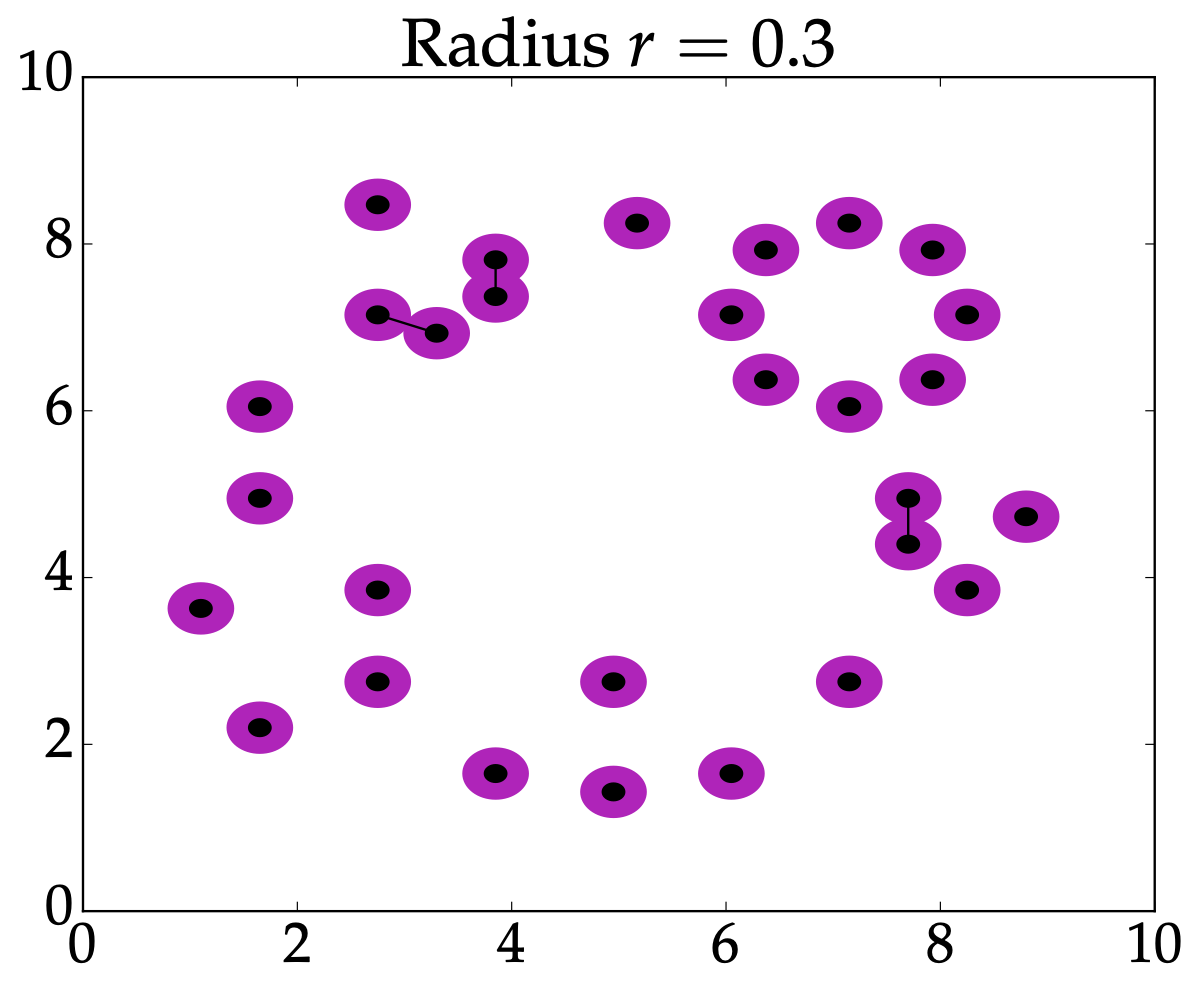
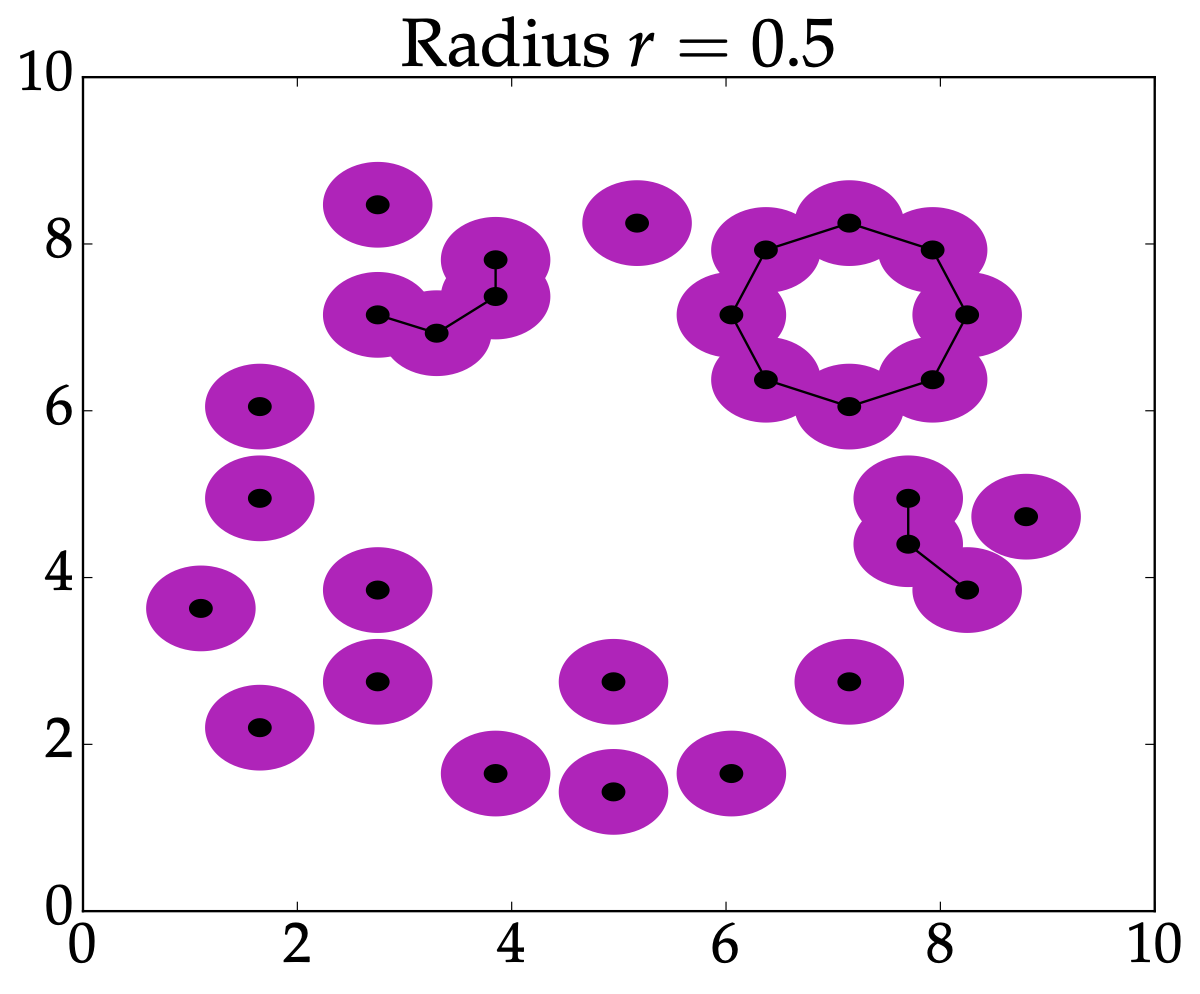
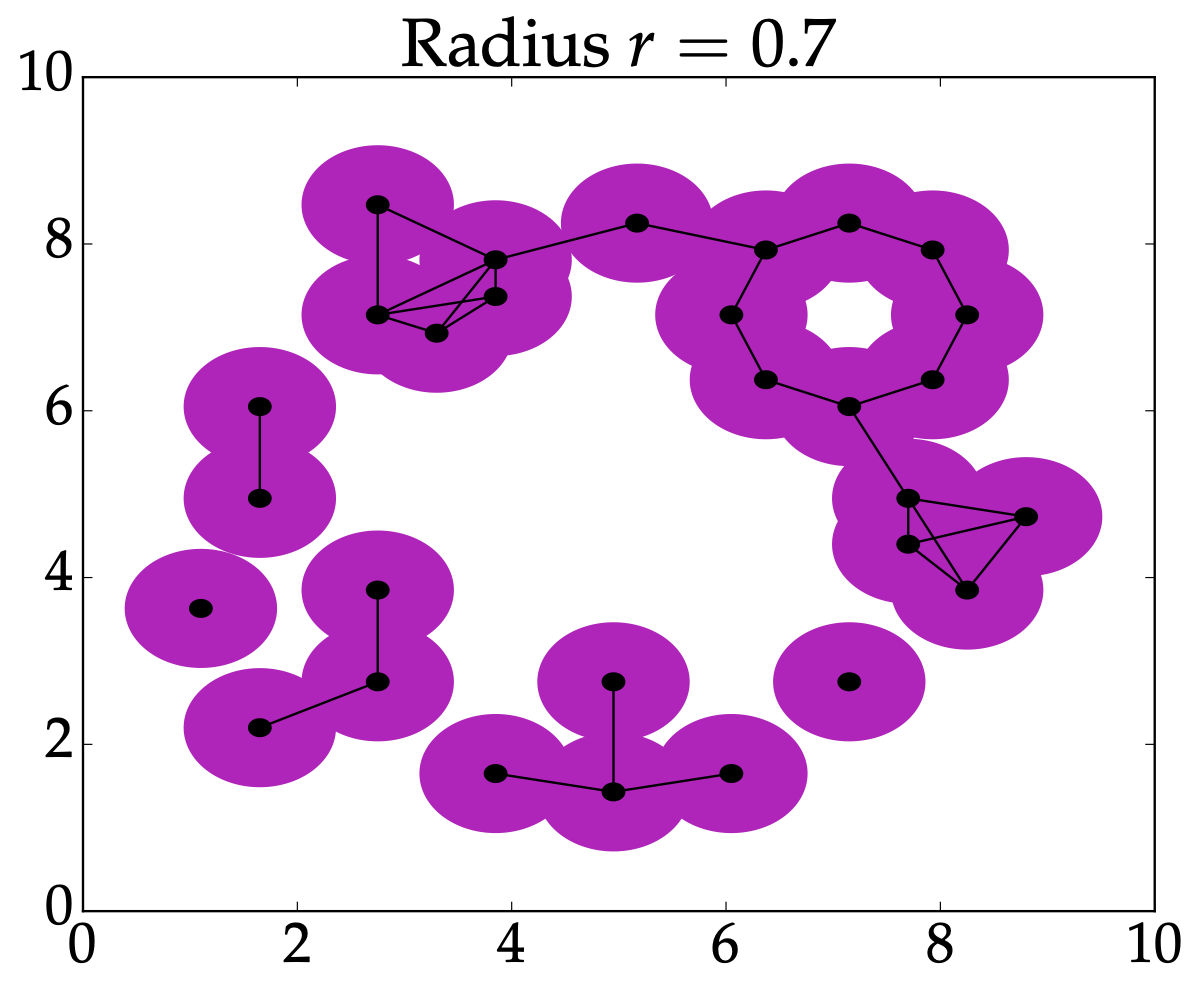

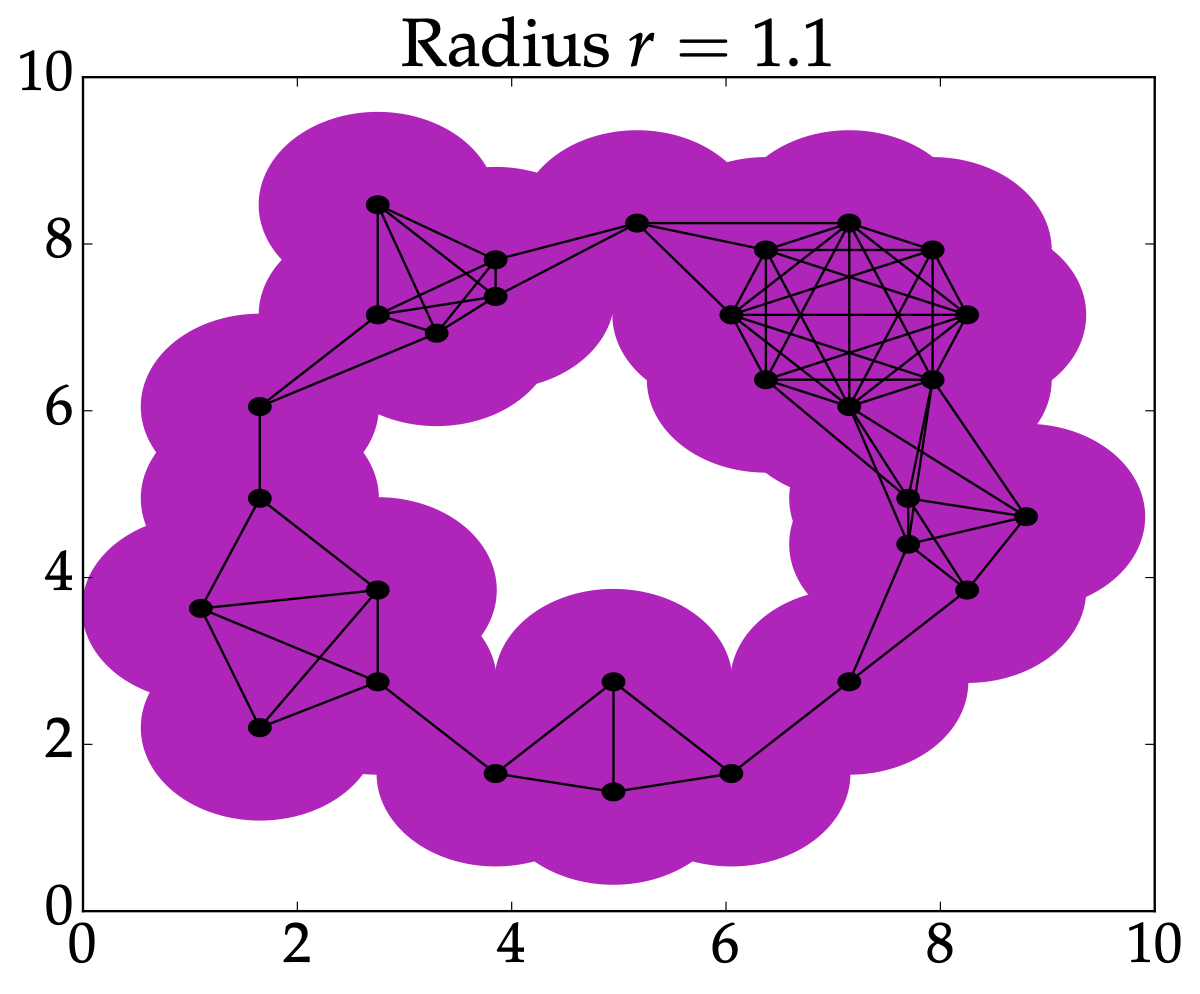
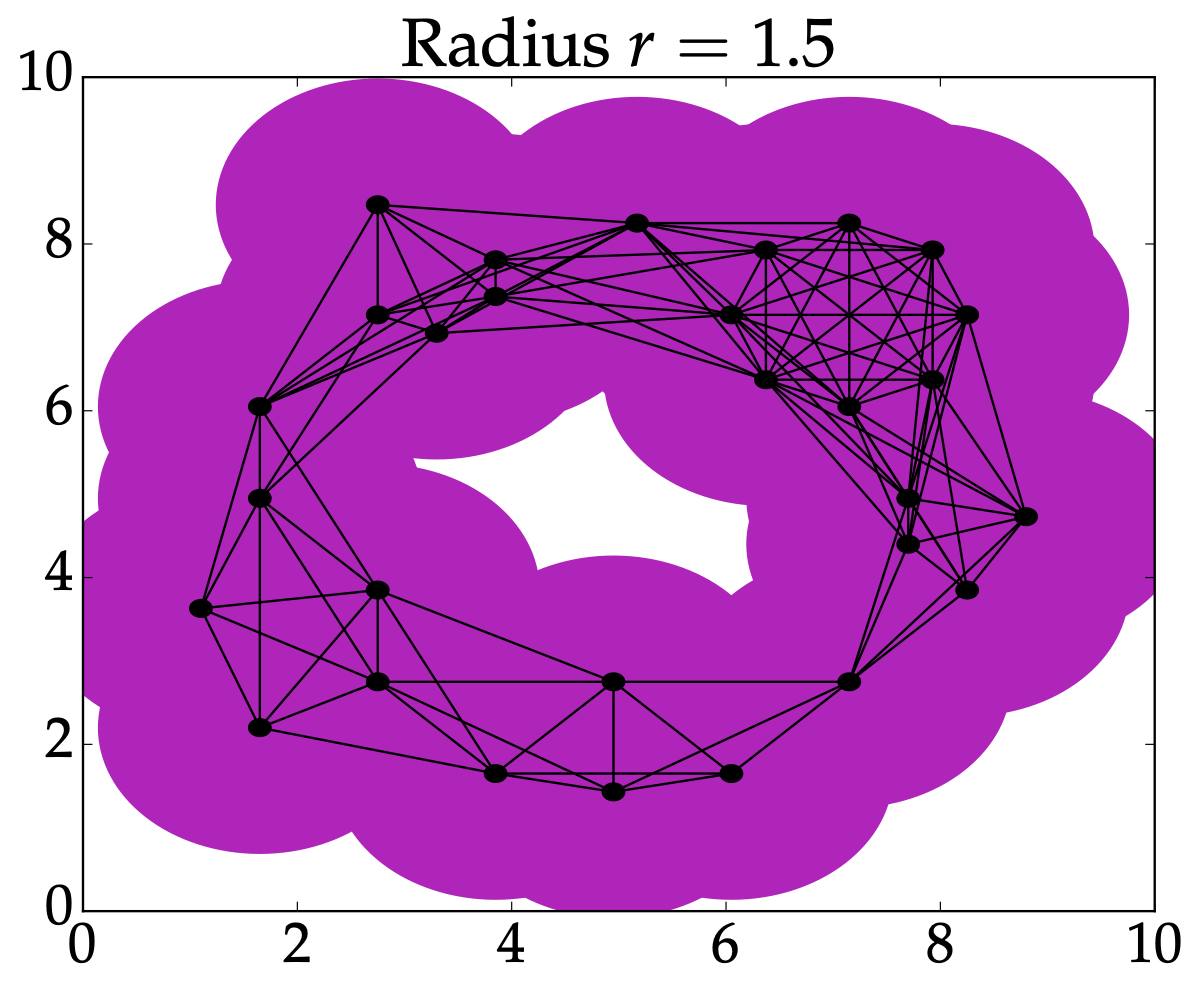
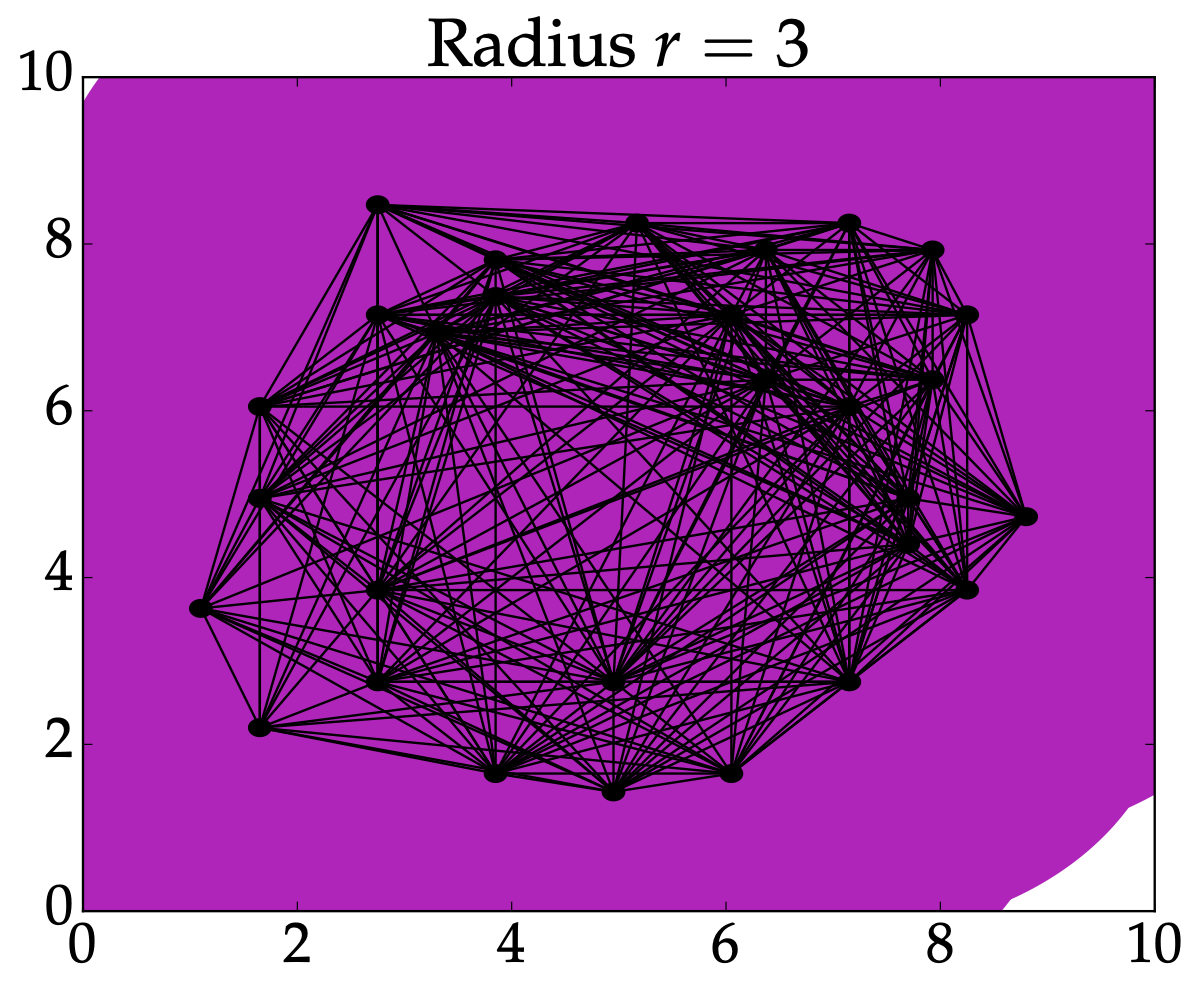
From last time: Nerve#
Given a finite collection of sets \(\FF\), the nerve is $$\mathrm{Nrv}(\UU) = {X \subseteq \FF \mid \bigcap _{U \in X} U \neq \emptyset}.
Example: Cech complex#
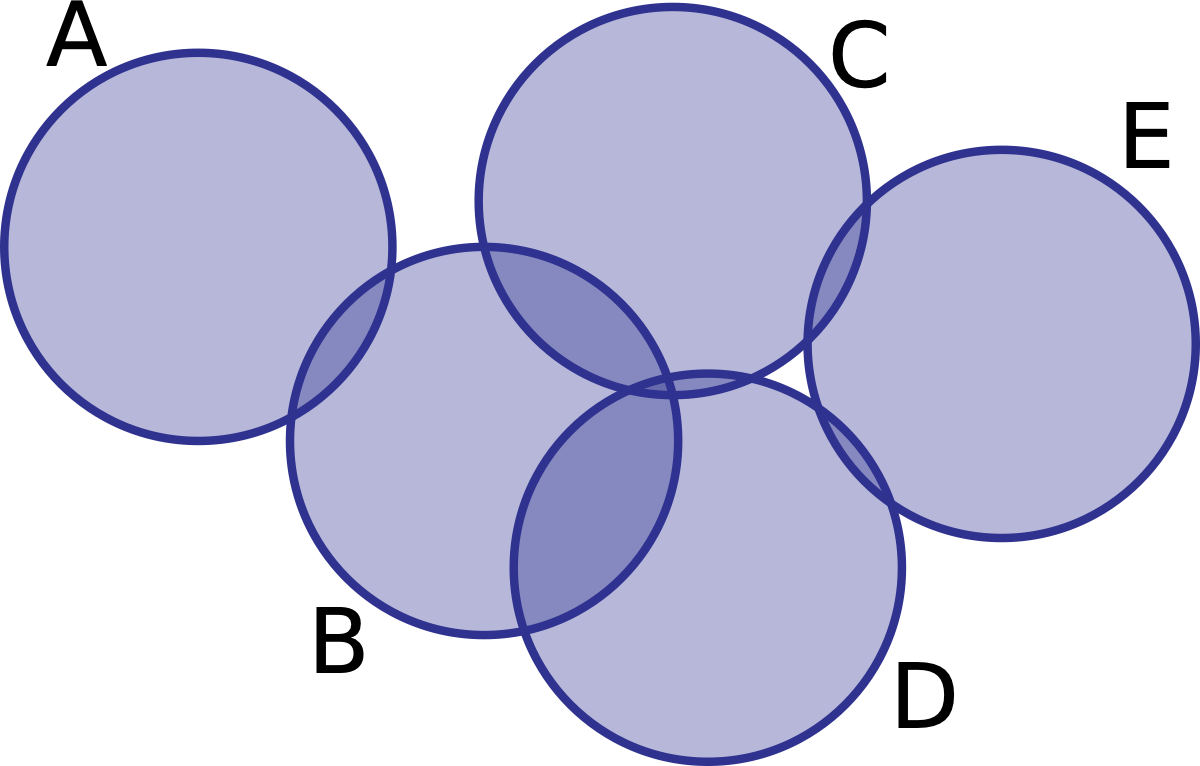
Warning#
The complex is an abstract simplicial complex. The obvious map into \(\mathbb{R}^N\) doesn’t necessarily get you a geometric simplicial complex!
Rips complex#
Definition: Given \(P \subseteq (M,d)\), the Vietoris-Rips complex is $$VR^r(P) = \left{ \sigma \subseteq P \mid d(x_i,x_j)\leq 2r \text{ for all } x_i,x_j \in \sigma \right}
Warning: Radius vs diameter#
Example#
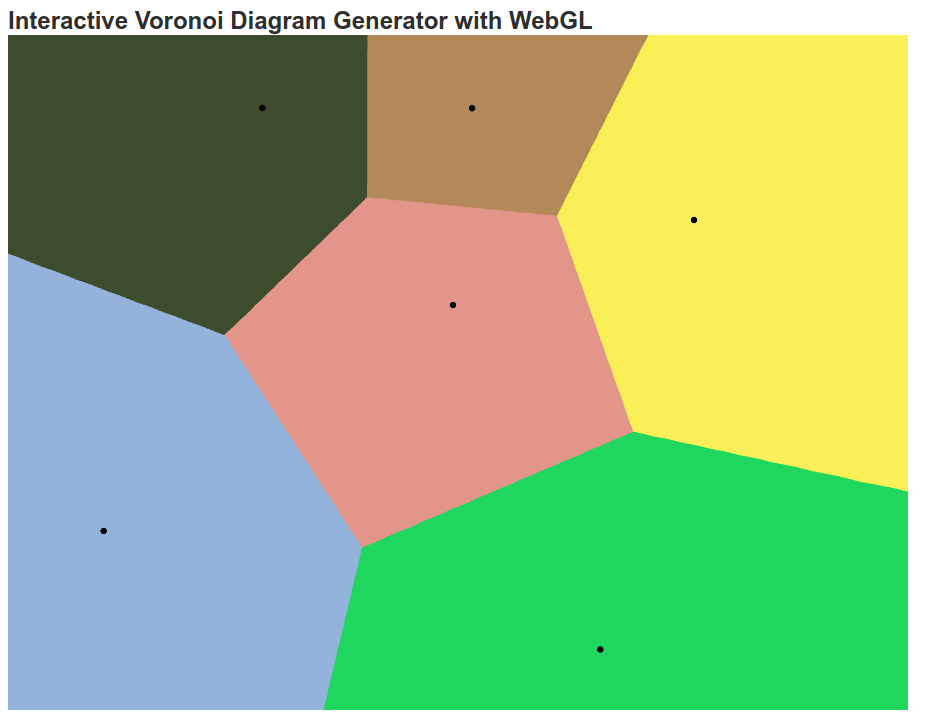
Properties#
Delaunay is an abstract simplicial complex.
If we have points in general position, the obvious embedding gives a geometric simplicial complex.
Delaunay is FIXED (has nothing to do with a radius or diameter parameter….)

Leading up to the alpha complex#

Alpha complex#
\(\mathrm{Del}_p^\alpha = \{x \in B(p, \alpha) \mid d (x, p) \leq d (x, q) \text{ for all } q \in P\} = B(p,r) \cap V_p\)
The alpha complex for point cloud \(P\) with radius \(r \geq 0\) is the nerve $$\mathrm{Del}_p^\alpha = \mathrm{Nrv}({D_p^\alpha \mid p \in P}).
$$
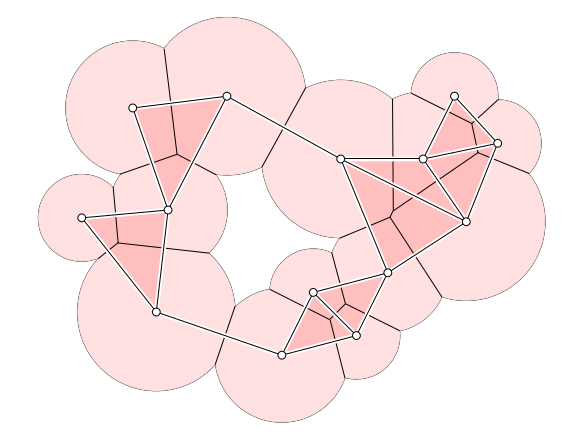
Properties#
\(\mathrm{Alpha}(r) \subseteq \mathrm{Delaunay}\)
\(\mathrm{Alpha}(r) \subseteq \check{C}(r)\)
\(\mathrm{Alpha}(r)\) has the same homotopy type as the union of balls of radius \(r\). For next time
EH III.7 (p75) Let \(P \subseteq \mathbb{R}^d\) be a finite set of points in general position. Denote by \(\check{C}(r)\) and \(\mathrm{Alpha}(r)\) as the and alpha complexes for radius \(r \geq 0\), respectively.
Is it true that \(\mathrm{Alpha}(r) = \check{C}(r) \cap \mathrm{Delaunay}\)?
If yes, prove the following two subcomplex relations. If no, give examples to show which subcomplex relations are not valid.
\(\mathrm{Alpha}(r) \subseteq \check{C}(r) \cap \mathrm{Delaunay}.\)
\(\check{C}(r) \cap \mathrm{Delaunay} \subseteq \mathrm{Alpha}(r)\)
